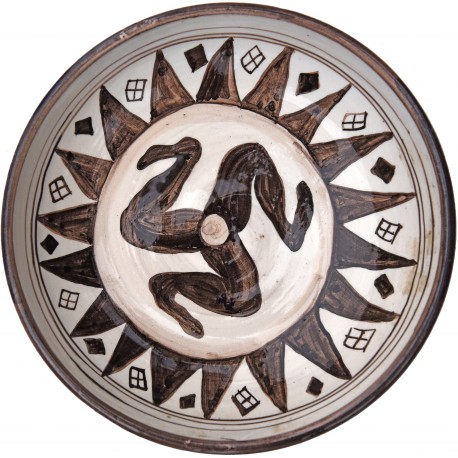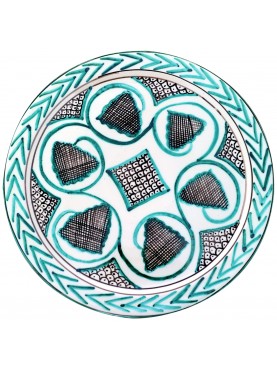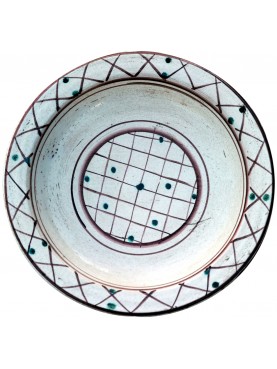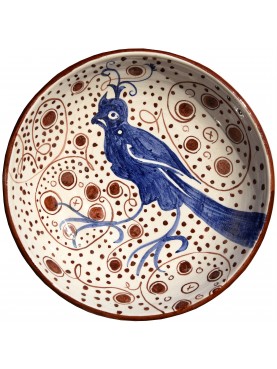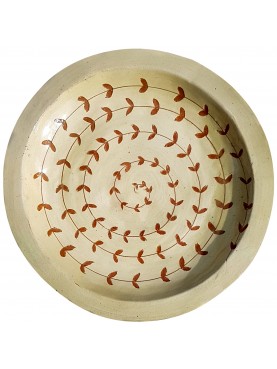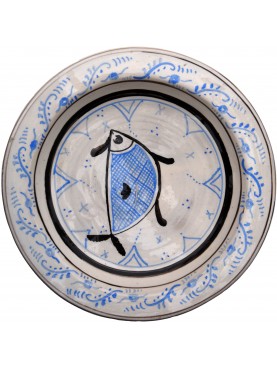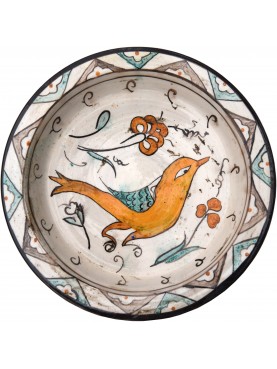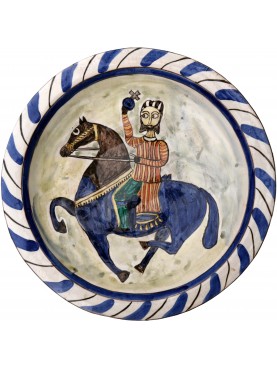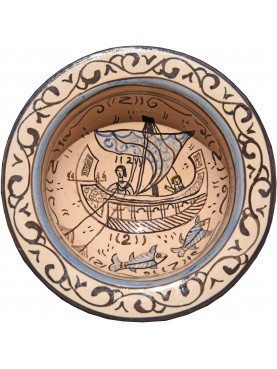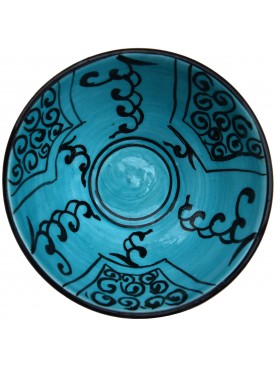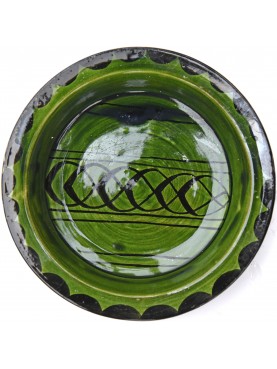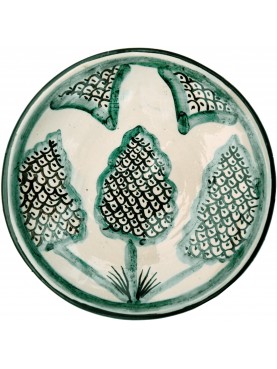Copy of an ancient medieval Tuscan dish - fish
Copy of an ancient medieval Tuscan dish - fish
12589
New
Medieval dishe with triskelion.
Classic dish of Arab Sicilian origin.
1 Available
Data sheet
| Height | 2.36 in | 6 cm |
| Diameter | 7.68 in | 19,5 cm |
| Thickness | 0.98 in | 2,5 cm |
| Weight | 3.31 lbs | 1,5 Kg |
| Historical period | Medioeval | |
| Manufacturing | from Tuscany | |
| Material | Majolica |
More info
During the Middle Ages, buildings were embellished on the outside with stone, plaster and paintings, but the arrival of enamelled and colored ceramic plates and bowls from the East around the X century, allowed an innovation in this decoration, guaranteeing a shiny surface that determined a breaking element with the opaque brick or stone wall. Some churches, especially in Pisa and Lucca, have been true museums of this type of ceramics, which are now collected indoors for their best conservation and protection from atmospheric agents.
A triskelion or triskele is a motif consisting of a triple spiral exhibiting rotational symmetry. The spiral design can be based on interlocking Archimedean spirals, or represent three bent human legs.
A triskelion is a traditional symbol of Sicily, where it is called trinacria, and of the Isle of Man.
The triskelion symbol appears in many early cultures, the first in Malta (4400–3600 BC) and in the astronomical calendar at the famous megalithic tomb of Newgrange in Ireland built around 3200 BC, Mycenaean vessels, on coinage in Lycia, and on staters of Pamphylia (at Aspendos, 370–333 BC) and Pisidia. It appears as a heraldic emblem on warriors' shields depicted on Greek pottery.
The triskelion is an ancient symbol of Sicily, with the head of the Gorgon, whose hair are snakes, from which radiate three legs bent at the knee.[8] The symbol dates back to when Sicily was part of Magna Graecia, the colonial extension of Greece beyond the Aegean. Pliny the Elder attributes the origin of the triskelion of Sicily to the triangular form of the island, the ancient Trinacria (from the Greek tri- (three) and akra (end, limb)), which consists of three large capes equidistant from each other, pointing in their respective directions, the names of which were Pelorus, Pachynus, and Lilybæum
The Celtic symbol of three conjoined spirals may have had triple significance similar to the imagery that lies behind the triskelion. The triple spiral motif is a Neolithic symbol in Western Europe. Though popularly considered a "Celtic" symbol, it is an ancient Aryan symbol. It is carved into the rock of a stone lozenge near the main entrance of the prehistoric Newgrange monument in County Meath, Ireland. Newgrange, which was built around 3200 BC, predates the Celtic arrival in Ireland, but has long since been incorporated into Celtic culture. The symbol is also found carved in rock in Castro Culture settlement in Galicia and Northern Portugal (in ancient times it was part of southern Galicia). In Ireland before the 5th century AD, in Celtic Christianity the triskele took on new meaning, as a symbol of the Trinity (Father, Son, and Holy Spirit) and, therefore, also a symbol of eternity. Its popularity continues today as a decorative symbol of faith for Christians of Celtic descent around the world.

